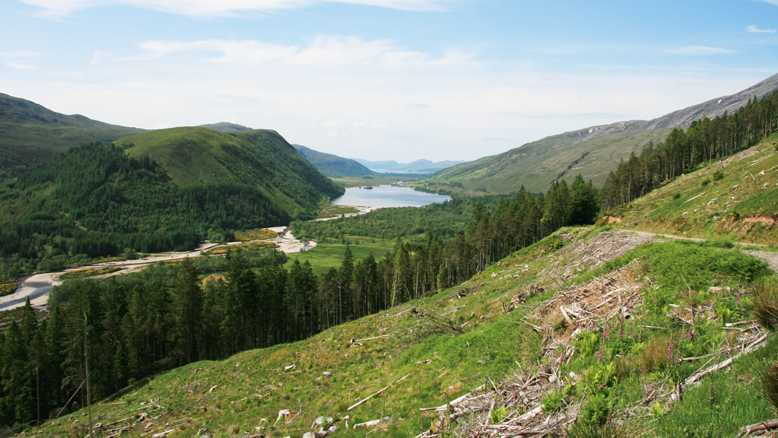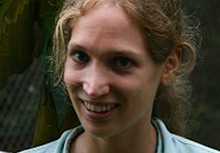Of conservation and board games
As a PhD student in ecology, I always thought of my interest for board games as a mere hobby without any connection with my work. A field course in conservation in the North West Highlands of Scotland unexpectedly changed my perception – both of board games and the challenges of dealing with complex socio-ecological systems.
Recently I had the chance to participate in a field course in conservation management in the Scottish Highlands, organised by the ETH ecologists, Jaboury Ghazoul and Claude Garcia (Chair of Ecosystem Management). The course was set in a land of stark beauty; melancholic lochs and glens dominated by dramatic mountains, and majestic Scots pines standing above heather moorland in remnants of the ancient Caledonian forest. To get a glimpse of land management in this part of Scotland, we interviewed rangers of Beinn Eighe National Nature Reserve [1], as well as foresters, private estate owners, crofters (small-scale tenant farmers mostly producing lamb and beef), managers of community-owned estates, and interested citizens. Ignoring the rain, enduring the midges, fighting off the ticks (see also Jaboury Ghazoul’s blog post); being the keen students that we were, we nevertheless bombarded the interviewees with questions.
Different objectives may converge
A great variety of management objectives were expressed. Some lands are managed for woodland restoration to enhance recreational, conservation, and aesthetic value, and others for revenue generation by growing commercial timber, energy production, or sheep farming. Many estates fulfil not one but several of these objectives. For example, on the estate managed by the Forestry Commission, some plots were for timber production, others for native woodland restoration.
We saw that different objectives can lead to the same management plan. The rangers at the Beinn Eighe National Nature Reserve plant native trees for conservation, local communities do it to establish woodlands for recreation, and large land-owners plant because it provides income through government grants.
There are tensions and conflicts; and at the heart of these are the deer. Overgrazing by deer is the major threat to reforestation success. Restoration of pine trees requires tree planting, and also deer control, largely by culling or fencing. But some stakeholders, such as the large sports hunting estates, derive a large share of their income from deer stalking, and do not appreciate the reduction of deer numbers for conservation or community interests.
Managing complexity by gamification

Indoors, we unravelled information gleaned from the different stakeholders, in all its complexity. We identified issues, actors, resources, and the interactions among them. We discussed, debated and eventually developed a model skeleton describing landscape management by hanging Post-it notes on a wall linked by arrows. Yet it clarified our understanding and dispelled confusions.
The model was built using the architecture of an agent-based model. An agent-based model describes a system in a relevant way to natural resources and landscape management. Agents are understood as autonomous entities actively interacting with their environment and resources according to certain rules. They have cognitive capacities and can be provided by the modeller with desires, beliefs and intentions. The consequences of their actions affect the environment and in turn trigger responses from the agents, representing feedback loops and reflexivity. There is no difference in nature between such a model and a board or role playing game. Once the links are sufficiently well quantified, a game can be designed that stakeholders can play to virtually explore different management strategies.
Although we did not go that far, some of the students had previously constructed models for two case studies; one in India, and the other one, precisely, in the Highlands. Some groups created board games, other computer games. To my amazement, I realised that their game bore striking similarities to Agricola [2], a strategy board game I play in which players embody farmers cultivating their land. [2] What better way to link my enthusiasm for ecology and games?
An example: the Kodagu Role Playing Game
The process of model development, game design and application is long and full of pitfalls. How does one create the trust needed to engage in this process? How to deal with power imbalances? Companion Modelling (ComMod) is an approach that helps stakeholders and researchers to work together. [3] Such a process was undertaken in Kodagu, a district in the South of India where farmers grow coffee and pepper in a complex landscape of forests, rice paddies and coffee estates. The Kodagu Role Playing Game is based on a model defined by farmers and researchers in the frame of the project “Managing Biodiversity in Mountain Landscapes” [4]. In this game, players manage a coffee plantation under various scenarios. The outcome of the game will enhance the understanding of a highly complex socio-ecological system and suggest solutions for resource management. The game can be played online for free here. Similar models are currently being developed in Madagascar, Cameroun, Colombia and Indonesia, by ForDev, the ETH research group led by Claude Garcia and chaired by Jaboury Ghazoul.
Further information
[1] externe SeiteBeinn Eighecall_made National Nature Reserve
[2] externe SeiteAgricolacall_made
[3] externe SeiteComModcall_made
[4] externe SeiteManaging Biodiversity in Mountain Landscapescall_made



